Layout for VFX, Camera Narrative and Language
A course by Carolina Jiménez García , Layout artist at VFX
Joined June 2017

Learn to dominate the language of cinematographic visual narrative in a 3D environment
Carolina Jiménez - visual effects artist for cinema - has worked in some of the most important studios in the world participating in productions such as the trilogy of The Hobbit , World War Z , Prometheus , Megalodon , The League of Justice , Antman and the Wasp or Power Rangers . His job is to mount the scene by placing all the elements paying attention to the narrative intention, composition and framing of the camera, as if he were shooting a film from the computer.
In the course Introduction to VFX for cinema Carolina taught you the operation of the effects pipeline for audiovisual productions; This is responsible for explaining the importance of knowing the cinematographic language, mastering the audiovisual narrative and the different steps a layout artist must take to set up a scene in Maya. A VFX artist must have a perfect balance between technical and artistic knowledge about the use of the camera
What will you learn in this online course?
21 lessons & 9 downloads
- 95% positive reviews (65)
- 1,945 students
- 21 lessons (2h 53m)
- 9 additional resources (4 files)
- Online and at your own pace
- Available on the app
- Audio: Spanish
- Spanish · English · Portuguese · German · French · Italian · Polish · Dutch
- Level: Beginner
- Unlimited access forever
What is this course's project?
Putting into practice everything learned during the course you will shoot your own cinematographic scene without the need of great resources or sets.
Projects by course students
Who is this online course for?
VFX students, animators and any moviegoer who wants to understand the layout work process for VFX.
Requirements and materials
Although Carolina will use Maya for her explanations, it is not essential to have this software or know how to use it. Yes you will need a video camera, which can be your mobile phone, and a computer in which you must have installed a video editing program.

Reviews

Carolina Jiménez García
A course by Carolina Jiménez García
Carolina Jiménez has more than a decade of experience as a layout artist for VFX. His work has taken him to countries such as Australia, New Zealand or the United Kingdom and he has participated in major international film productions such as World War Z , Star Trek Beyond , the trilogy of The Hobbit , Antman and the Wasp , The Justice League , The Planet of the Apes 2 , Prometheus , Megalodon , The League of Justice or Power Rangers . He currently lives in Vancouver (Canada), where he works as Layout artist in Scanline VFX.
Content
-
U1
Introduction
-
Presentation
-
Influences
-
-
U2
Layout
-
What is the layout in VFX?
-
Basic concepts
-
Camera set (set camera)
-
Tracking camera
-
Layout camera
-
The plate
-
What are Full CG Shots?
-
-
U3
Layout work in VFX with Maya
-
Scene in Maya: preparation
-
Blocking of animation and repos
-
Export of layout product in the pipeline
-
-
U4
Camera work
-
Introduction to the psychology of film narrative 1
-
Introduction to the psychology of film narrative 2
-
Introduction to the psychology of film narrative 3
-
Lenses, focal length and parallax 1
-
Lenses, focal length and parallax 2
-
Plane types and framing
-
Camera movements
-
Dialog coverage (180º rule)
-
Composition: positive and negative space
-
-
FP
Final project
-
Layout for VFX, language and camera narrative
-
What to expect from a Domestika course
-
Learn at your own pace
Enjoy learning from home without a set schedule and with an easy-to-follow method. You set your own pace.
-
Learn from the best professionals
Learn valuable methods and techniques explained by top experts in the creative sector.
-
Meet expert teachers
Each expert teaches what they do best, with clear guidelines, true passion, and professional insight in every lesson.
-
Certificates
PlusIf you're a Plus member, get a custom certificate signed by your teacher for every course. Share it on your portfolio, social media, or wherever you like.
-
Get front-row seats
Videos of the highest quality, so you don't miss a single detail. With unlimited access, you can watch them as many times as you need to perfect your technique.
-
Share knowledge and ideas
Ask questions, request feedback, or offer solutions. Share your learning experience with other students in the community who are as passionate about creativity as you are.
-
Connect with a global creative community
The community is home to millions of people from around the world who are curious and passionate about exploring and expressing their creativity.
-
Watch professionally produced courses
Domestika curates its teacher roster and produces every course in-house to ensure a high-quality online learning experience.
FAQs
Domestika's courses are online classes that provide you with the tools and skills you need to complete a specific project. Every step of the project combines video lessons with complementary instructional material, so you can learn by doing. Domestika's courses also allow you to share your own projects with the teacher and with other students, creating a dynamic course community.
All courses are 100% online, so once they're published, courses start and finish whenever you want. You set the pace of the class. You can go back to review what interests you most and skip what you already know, ask questions, answer questions, share your projects, and more.
The courses are divided into different units. Each one includes lessons, informational text, tasks, and practice exercises to help you carry out your project step by step, with additional complementary resources and downloads. You'll also have access to an exclusive forum where you can interact with the teacher and with other students, as well as share your work and your course project, creating a community around the course.
You can redeem the course you received by accessing the redeeming page and entering your gift code.



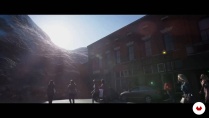
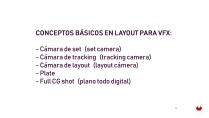
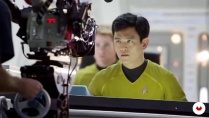
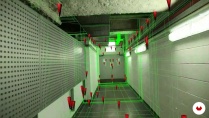
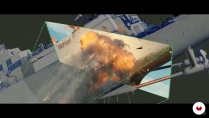
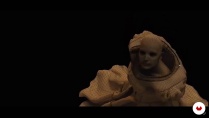




ahmedtagm
PlusAmazing course
matiasnahuel
Buenisimo
View translation
Hide translation
mal_101087
Una mirada general del proceso. Poca información técnica
View translation
Hide translation
usam70987
me encanta
View translation
Hide translation
marc_garrabou
genial